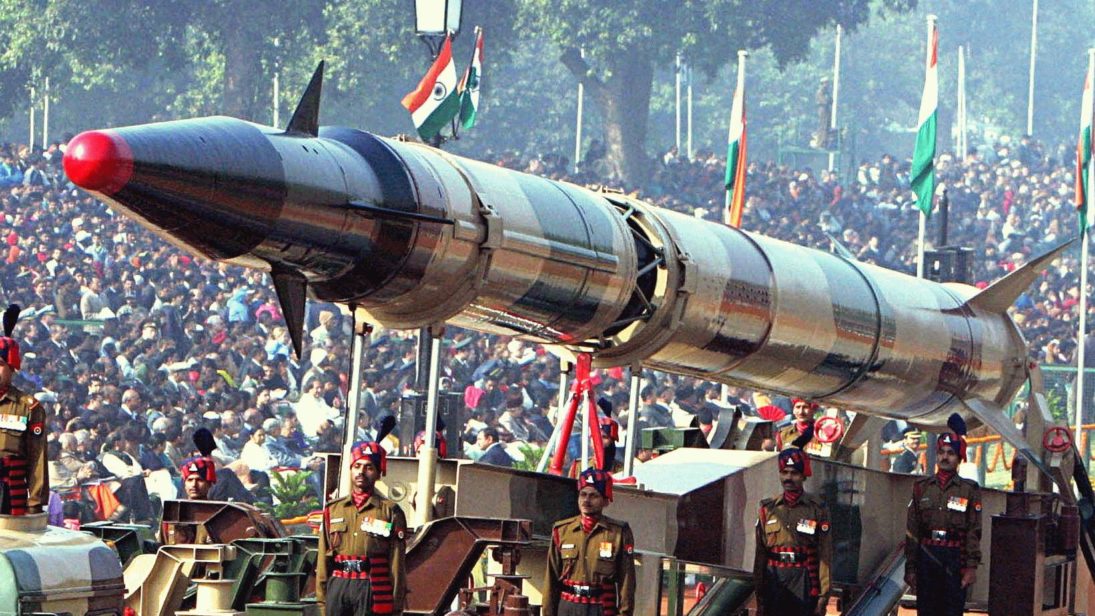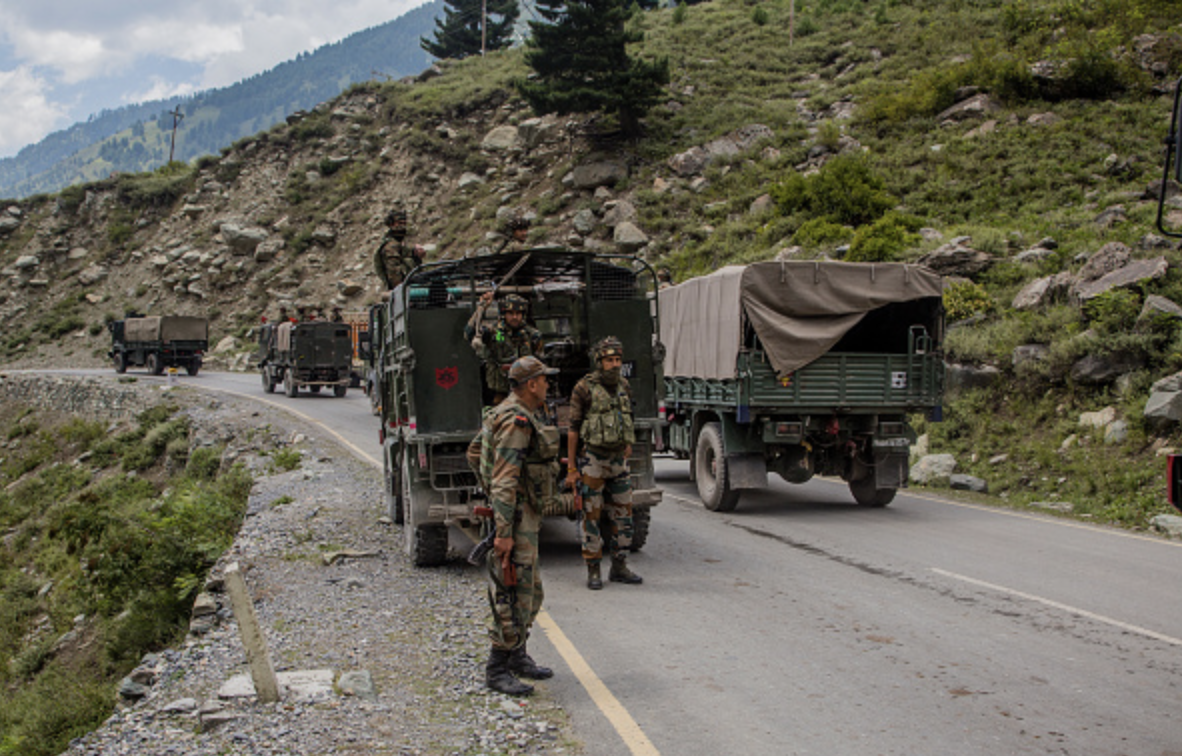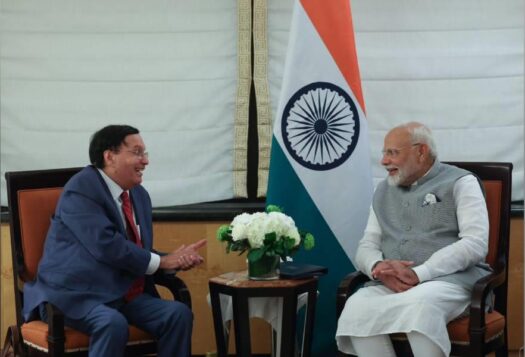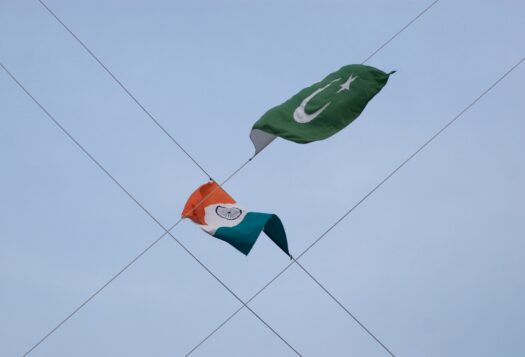
In 2000, Brigadier Gurmeet Kanwal (retired) wrote engaging piece on the question of whether India needed tactical nuclear weapons (TNWs). The erudite soldier-scholar presented valid arguments for both sides of the argument, and in his characteristically nuanced style, made a convincing case for India to avoid going down the path of TNWs. His emphatic concluding sentence, “[t]he Indian nuclear arsenal does not need tactical nuclear weapons—and never will,” perfectly summarizes his views. While it may be assumed that the late Brigadier, who sadly passed in 2020, would continue to maintain his stand on this issue, one can also be reasonably assured that he would have constantly revised and re-evaluated his arguments to reflect the vastly different geopolitical reality 20 years on.
The prospect of a long-feared two-front war weighed significantly on the Indian security establishment as the standoff between the Indian and Chinese armies on the Line of Actual Control (LAC) continued into 2021. A welcome but wary de-escalation process has commenced, but the crisis has rekindled the debate regarding India’s options to deter and punish misadventures by both Pakistan and China along its northern frontiers. While there has been no indication of a change in India’s nuclear doctrine, it is useful to both revisit the question of TNWs as a viable recourse for India and to examine if leveraging the nuclear option will yield desired outcomes. This discussion is important in the post-Galwan environment, where Sino-Indian ties are likely to be adversarial, and India looks to augment its deterrent capabilities, particularly along its northern borders.
While there has been no indication of a change in India’s nuclear doctrine, it is useful to both revisit the question of TNWs as a viable recourse for India and to examine if leveraging the nuclear option will yield desired outcomes.
India’s Nuclear Neighbors
Despite arguing strongly against India’s acquisition of TNWs, Kanwal left the door ajar for their future procurement by recommending that India retain the capability to develop and produce TNWs. Somewhat prophetically, he felt that it would be in the context of China that India may have to revisit its nuclear options. The recent trajectory of Sino-Indian ties has reinforced the validity of these misgivings, and the prospect of armed conflict between India and China does not appear as implausible as it did two decades ago. China has transposed its maritime salami-slicing to the yet-to-be-demarcated border with India, mounting a series of progressively escalatory actions, as witnessed at Depsang (2011, 2013), Chumar (2014), Doklam (2017), and Galwan (2020). The Galwan crisis played out for over eight months, with troops engaged in periodic skirmishes, and multiple rounds of talks that devolved into desultory commitments of de-escalation. While the Line of Control (LoC) between India and Pakistan continues to be the most volatile flashpoint in the region, the LAC appears to be inexorably transforming into something similar.
At the turn of the century, Pakistan arguably posed the greatest military threat to India. With the Kargil War in 1999, the nuclear tests of 1998, and the prospect of relentless cross-border terrorism across the LoC, it was easy to believe that an all-out military conflict with Pakistan was quite likely. As the conventional military asymmetry between the two neighbors increased, Pakistan justified the development of tactical nuclear warheads as part of its pursuit of a credible minimum deterrent. Pakistan’s arsenal of TNWs has ostensibly evolved as a counter to India’s “Cold Start” doctrine, which aimed to carry out rapid armored thrusts into Pakistani territory without setting off the nuclear tripwire. In order to counter this strategy, Pakistan chose to signal a lower nuclear threshold, and introduced the specter of battlefield nuclear weapons as a deterrent against India. With thinly veiled threats of the use of TNWs during crises, such as the period following the attack on the Indian Parliament building in December 2001, it became obvious that the cloud of a nuclear war in South Asia was here to stay. India’s significant conventional military advantage vis-à-vis Pakistan allowed it to maintain a defensive nuclear posture, with a stated no-first use policy and credible second-strike capability acting as a deterrent against any potential nuclear misadventure on the part of the latter.
In China, however, India faces an entirely different prospect—that of being bullied and stared down the Himalayas by a militarily stronger adversary, one willing to use its relative strength as an instrument of coercion against other states. It is evident that India has failed to deter China’s land-grab activities, and has thus far been unable to mount a sufficiently punitive military response that may dissuade the latter’s proclivity for military intrusions across the LAC. Considering that the conventional military capability gap between India and China will continue to widen for the foreseeable future, signaling a change in its nuclear doctrine may be an appealing, and for some, the only viable option for India.

Implications of India’s Acquisition of TNWs
While battlefield nuclear weapons are described as being “tactical” in the context of their actual use, they can significantly alter a region’s security environment even without being deployed. Their presence in a country’s arsenal and a signaled willingness to use them will decidedly exacerbate the regional security dilemma, as other states would seek safety in a bigger, and more lethal arsenals of their own. India’s acquisition of TNWs is likely to force China to re-think its strategy for the LAC, but, as discussed below, it is questionable whether the net outcome would actually serve India’s strategic objectives.
India’s efforts to be recognized as a responsible nuclear power have historically revolved around a robust, centralized command and control system for nuclear weapons, and a firm no-first use commitment. For India, relinquishing its posture of nuclear restraint would impose significant reputational costs and jeopardize its efforts to find a place at the global nuclear high table. The challenges of storage, handling, and deployment of these weapons in arduous physical environments and the decentralization of decision-making authority for the use of these weapons would pose significant risks in the “fog of war.” Moreover, the actual use of such weapons will likely attract a retaliatory strike, thus triggering a rapid escalation into full-scale nuclear Armageddon. Importantly, it would be hard for India to justify the use of nuclear weapons of any yield as a response to Chinese actions of territorial salami-slicing and sub-conventional military actions that do not even cross the threshold of a full-scale conventional military response from India.
If India chose to go down the path of TNWs to try to deter China, a critical yet unintended consequence would be to exacerbate the security dilemma with Pakistan, and possibly trigger a destabilizing nuclear arms race. While it may be argued that Pakistan’s possession of TNWs may have constrained India’s military options along the LoC, it is unlikely that India’s acquisition of these weapons would have the same effect on China and Pakistan. This is because in both cases, India has posited itself as the victim-defender, and Pakistan and China as the revisionist aggressors. India’s defensive strategic posture would not align well with a war-fighting doctrine that included the escalatory use of TNWs—potentially within or close to its own territory. There has also been some recent conjecture that India may be considering pre-emptive counter-force nuclear strikes as an option, without officially renouncing its no-first use policy. Since that is a course of action available to India even without altering its nuclear doctrine, the acquisition of TNWs would be redundant to that end. India’s possession of TNWs is unlikely to add value to its strategic signaling, and would, therefore, fail to enhance deterrence against China.
A drastically altered nuclear posture, on the other hand, is unlikely to serve India’s cause and may impose unacceptable strategic costs. For now, it seems the venerable Brigadier’s views on the lack of utility of TNWs for India’s security objectives, continue to hold ground.
Looking to The Future: TNWs or Conventional Modernization?
Instead of pursuing the acquisition of TNWs, India needs to develop and deploy conventional capabilities that can impose deterrent punitive costs for China’s misadventures. In a period where defense budgets are likely to be under stress, this would entail rethinking its war-fighting doctrine, and harnessing technology more effectively. Single-service standing formations would have to give way to lean, agile, and joint structures. The creation of theater commands needs to be supplemented with a coordinated capability acquisition program that focuses on removing inter-service redundancies.
Importantly, India needs to continue to mount proportionate and planned military responses to transgressions along the LAC when required. The manner in which India signals intent to Pakistan along the LoC may be emulated on the LAC, to convey to China that every transgression would invite retribution. Not punishing China’s military adventurism will only embolden and enable its aggressive tactics in the region. India would also need to deploy other instruments of statecraft, by developing meaningful diplomatic, economic, and military partnerships with both regional countries and others with whom its interests align. International recognition that China’s actions are normatively unacceptable would provide a useful supplement to military means of deterrence. A drastically altered nuclear posture, on the other hand, is unlikely to serve India’s cause and may impose unacceptable strategic costs. For now, it seems the venerable Brigadier’s views on the lack of utility of TNWs for India’s security objectives, continue to hold ground.
***
Image 1: Wikimedia Commons
Image 2: Yawar Nazir via Getty Images


